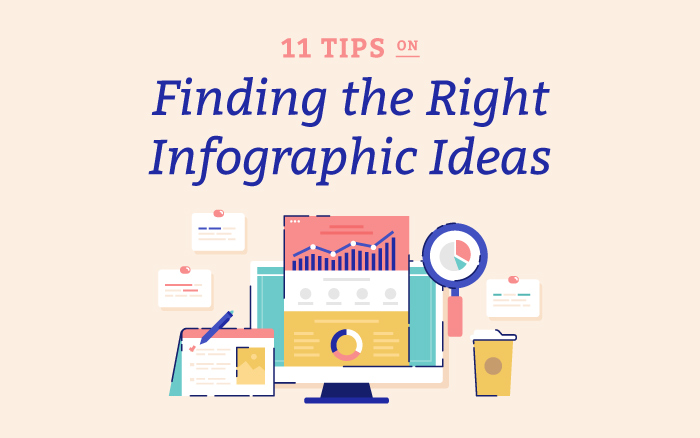Smarter Ways for Brainstorming Infographic Ideas

We are daily exposed to a vast number of infographics when surfing on the web as websites focus on delivering visual content to attract traffic and generate leads.
According to a study conducted by Hubspot, infographics are three times more likely to be shared than other types of content on social media and are more likely, therefore, to generate more traffic and leads. This is probably because 90% of information transmitted to our brains is visual and infographics are the perfect way to attract attention through the presentation of complex data in a digestible format of good design and short chunks of text .
It's important to remember that the average human attention span is eight seconds in this digital era. So ensure that your infographics are easy to understand by using simple words that everyone can immediately get.
Since there are millions of infographics out there, how can you generate the perfect ones that stand out among the others? Here are 11 few things to note when you want to brainstorm your ideas:
1. Who are you writing for?
What are their demographics? Their concerns? And how can you help them? There is more detail about how to approach this here
2. What is your goal?
- Do you want to make consumers more aware of your brand?
- Are you trying to improve brand loyalty?
- Are you using an infographic as a visual way of answering frequent questions?
- Are you trying to improve your customer education?
3. What do you have to share?
An infographic is the perfect place to showcase your expertise by providing helpful information that will educate your clients and customers .
4. Stuck for inspiration? Brainstorm!
Click here to find out more about brainstorming methods and tools
5. Make a list of keywords that way you can be sure that your infographic is positioned top answer the frequent searches posted by your target market.
For more information on how to select and use keywords click here
6. Find some great infographic examples to see how to use them in your business. There are lots of good ideas here
7. Be aware of current affairs that are trending out there and tap into them. Try using Google Trends, Buzzsumo, Medium, Google Scholar, News aggregators, Slideshare or Fivethirtyeight.com. We explain more about these here
8. Why not repurpose content you already have in blog posts, podcasts, videos, customer material or training programmes? Here’s how
9. Make sure your chosen topic is feasible and easily pulled together with plenty of available information from credible sources
10. Be flexible
Let go of an infographic idea that is just proving too difficult to pull together - you might need to pick another angle or another topic which will then flow much more easily.
11. Be patient
It’s highly likely that you will get a bit stuck; decide that you need to edit your work and realise that you need to make your infographic even more relevant to your target market. Don’t worry it’s all part of the process.
Thank you to my guest author:
Andre Oentoro is one of the co-founders of Milkwhale, a creative agency specializing in infographics. He’s also the author of Viral Infographics, a guide to getting the most value out of your website’s traffic.
